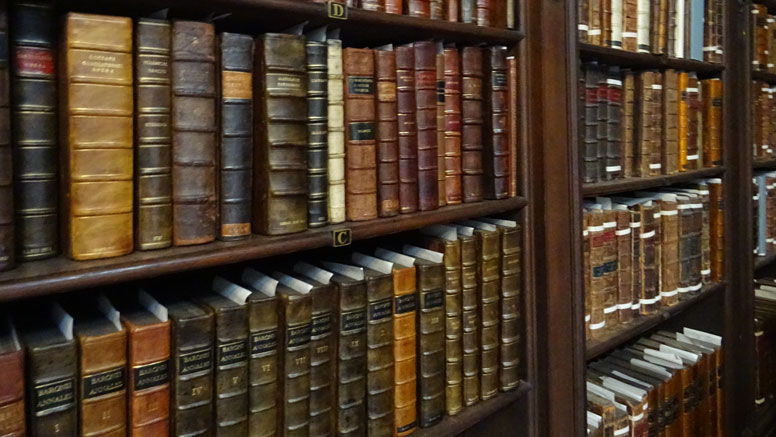Moving St Paul's Cathedral Library
Restore Harrow Green has been given the task of relocating 500 linear metres of books from Cathedral Library to the company's heritage storage facility.
24 Sept 2019

The collection of 11,500 items is being moved into storage at the former US air base in Upper Heyford while the Library undergoes remodelling over the course of two years.
The remodelling project involves renovating the room, so that it is fit to house the collection of rare religious books, some dating back to the 12th century, for decades to come, and will also make it more accessible to the public. As the Library is located at triforium level, the biggest part of the challenge was how to lower the packed books to the west gallery from where they could be loaded onto the vehicles.
A right royal exit
The triforium or upper level is accessible through a small lift, housed in an original light shaft, but this was not designed for the transit of large quantities of boxes and was therefore ruled out as a method of lowering the books. Another option was to use the geometrical staircase, which was used the last time the books were removed during WWII, but it too was ruled out. The stairwell is over 88 steps long and the spiral shape can be disconcerting, particularly when moving heavy objects. In addition to that, the height of the hand rail only conforms to 18th century health and safety standards.
The only solution was to use a winch and platform system just above the gallery, which is conveniently located near the exit. Teams loaded the boxes onto the winch used by the cathedral works department and lowered them to ground level. This part required careful planning as the books needed to be well secured for the ride down. They were then collected in a cordoned off area before being moved out through the Great West Doors, which are only usually opened for royalty.
Safe and secure
The Upper Heyford site, originally a US air force airbase, benefits from remarkable security features ideal for the heritage sector. The shelters were constructed to a scientific formulation of concrete mixed with granite so that the strong outer shells could withstand munitions and to provide fire resistance from jet take off. Each shelter is a self-contained, sealed unit, with a limited number of doors to minimise air flow, which could otherwise aid fire or provide access to pests. Pest management is an additional feature of the site which is regularly inspected and regulated by a professional pest control company.
The site is approved and recommended by the National Conservation Service because it meets the strict criteria set by them as well as being monitored for quality on a regular basis. It is the ideal space for the heritage sector as it also provides customers access to their collections in situ whenever they need it, or virtually through Harrow Green’s web based asset management software.